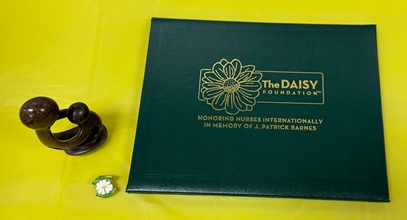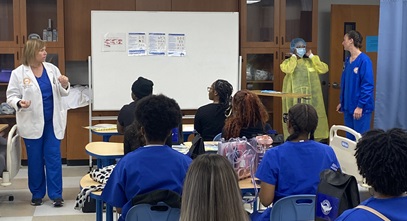Nurses’ uniforms have undergone many changes since they emerged in the 1800s. From the days of floor-length dresses with aprons to today’s variety of colorful scrubs, the design of the uniforms has changed based on functionality, professionalism, and the role of the nurse.
Prior to the foundation of modern nursing in the 19th century, nuns provided nursing care to sick and injured people. So the first nurse uniforms were derived from the nun’s habit.
Florence Nightingale’s efforts during the Crimean War helped turn nursing into a respected occupation, and in the late 1800s, she established a nursing school. Thereafter, the nurse’s uniform began to look more professional in order to distinguish trained nurses from those who were not. It was actually one of Nightingale’s students who designed the first recognizable nurse’s uniform, which included a long dress with an apron and a frilly cap.
From the 1880s until World War I, the uniform changed very little. Not only designed for protection against illness, it was also considered an expression of feminine virtue. During World War I, it became clear that the former styles of nursing uniforms were no longer practical. As the war brought in a vast number of wounded, nurses needed to be fast and efficient. The bulky aprons started to disappear and skirts were shortened for better mobility. Meanwhile, military nurses also wore tippets – short, cape-like garments worn over the shoulders – with badges sewn on them to denote rank.
As the popularity of the nursing profession grew, uniforms would continue to change. By the 1950s, there was an increased need for uniforms which could be mass-produced and easily cleaned. Sleeves became shorter and caps varied from a pill box style to a pointed version. Eventually, uniforms would become even less complex. Open-neck shirts and pants surfaced in the 1960s as more men entered the nursing profession, and by the 1970s, disposable paper caps replaced cotton ones. By the late 1970s, hats started to disappear altogether.
Since the 1990s, the traditional nurse uniform has been replaced with scrubs in most hospitals and healthcare facilities in the U.S. and Europe. Scrubs are shirts or tunic-style tops and trouser combinations. The functional, easy-to-care-for clothing provides healthcare professionals with comfort and more mobility. Uniform options have also expanded with many colors, shapes, fabrics, and prints to choose from.
Nursing uniforms have come a long way over the centuries, but distinguishable features, functionality, and protection have been longstanding requirements for them.




